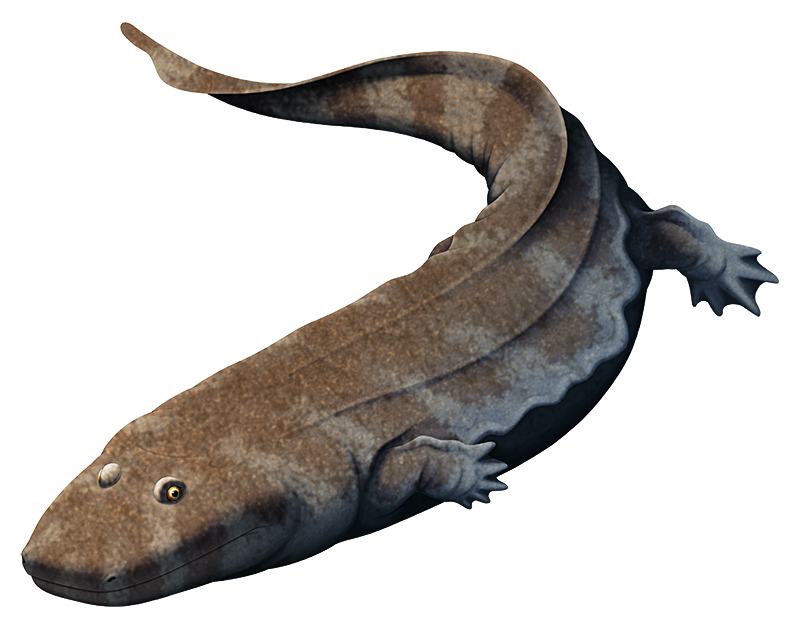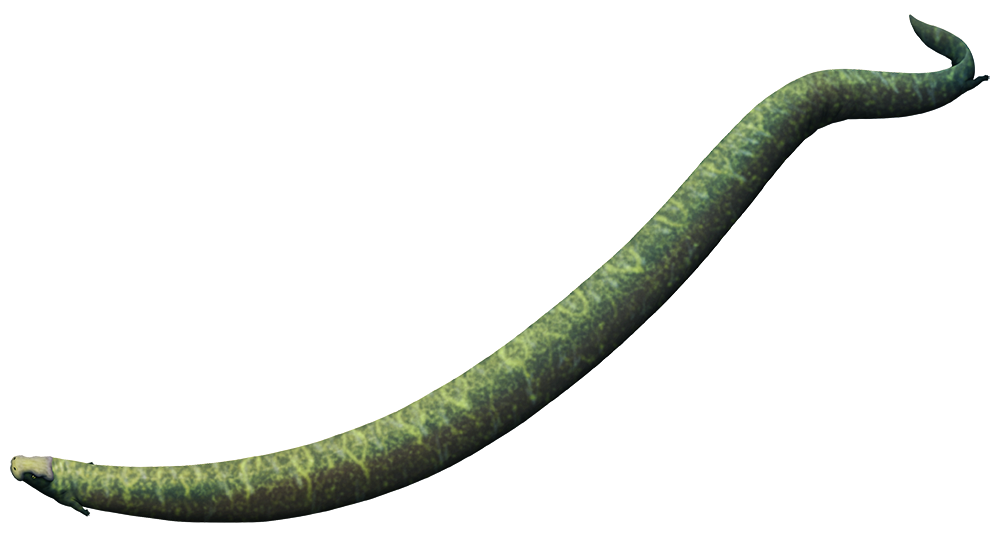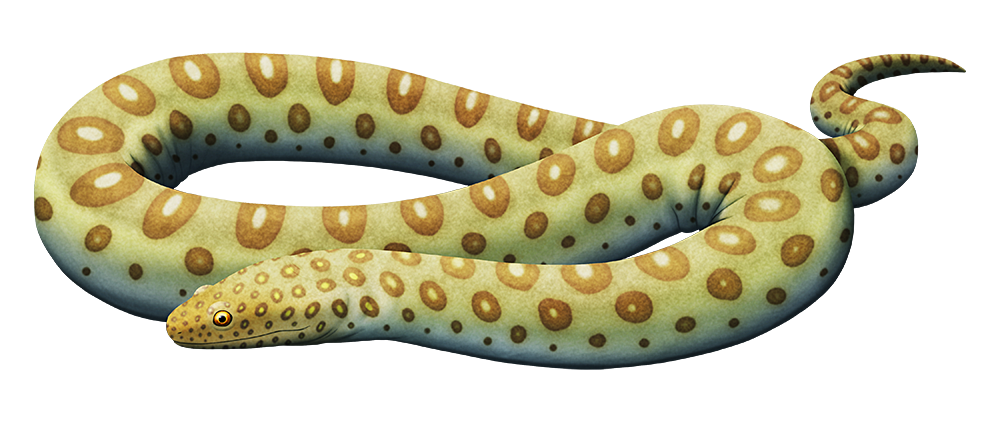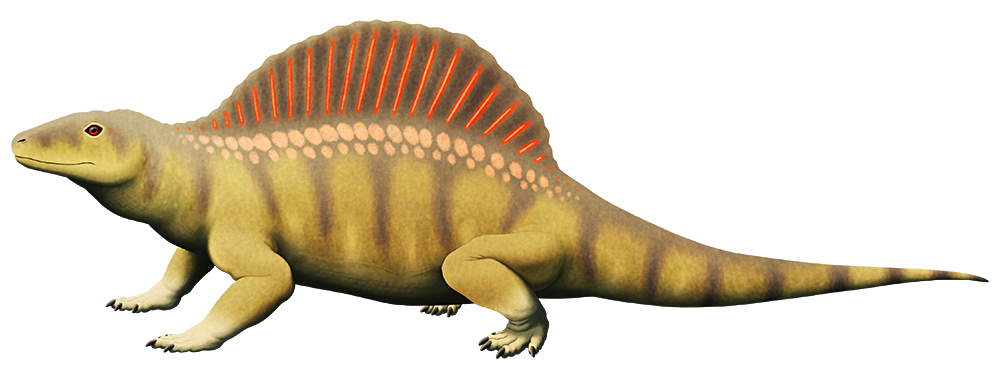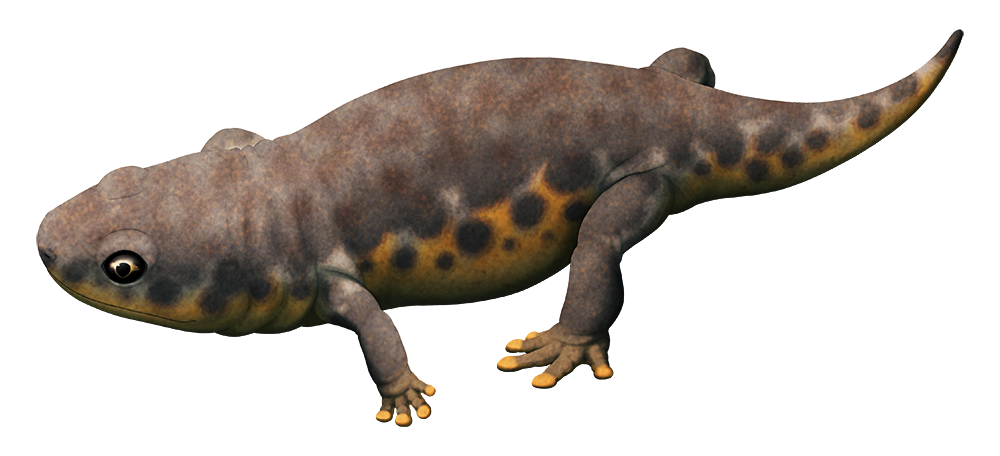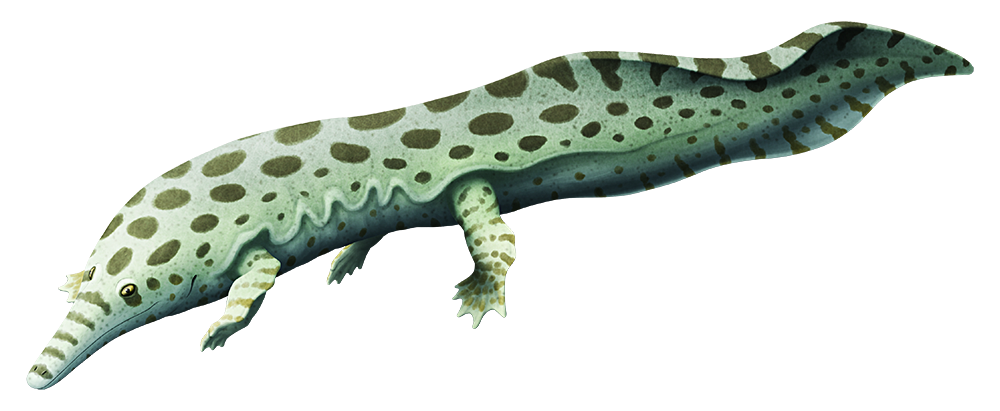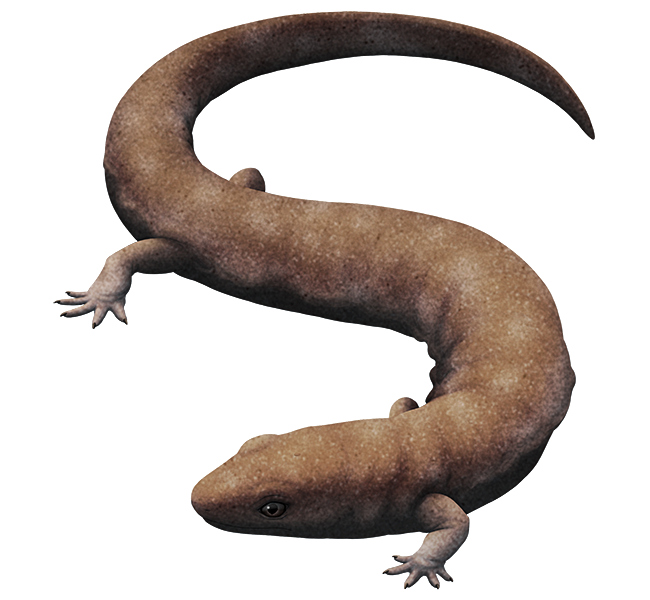A group of early tetrapods known as diadectids were some of the first land animals to become specialized herbivores, developing adaptations for the bulk processing of tough fibrous vegetation. They had powerful jaws, chisel-like front teeth, and grinding cheek teeth, and they grew to relatively large sizes for their time with bulky bodies supporting voluminous plant-fermenting guts.
Although usually considered to be reptilomorphs – “amphibian-grade” animals more closely related to amniotes than to modern amphibians – some studies have instead placed these early plant-eaters as being true amniotes related to the synapsids. Fossil trackways show they may have had amniote-like claws on their feet, and that their highly flexible lizard-like ankle joints allowed them to walk much more efficiently than other early tetrapods, possibly using a semi-upright gait, but these may be convergently evolved features. Since we don’t know whether they laid amniote-like eggs or if they instead spawned amphibian-style in water, it’s currently hard to tell for certain just what they really were.
Diasparactus zenos (sometimes alternately known as Diadectes zenos) was a diadectid that lived during the early Permian in New Mexico, USA, about 296 million years ago. Around 1.3m long (4’3”), it was only about half the size of its largest relatives, but it’s notable for having unusually high neural spines on its vertebrae – not quite long enough to be considered a sail, but more of a “high back” that may have supported powerful musculature or fatty deposits.


